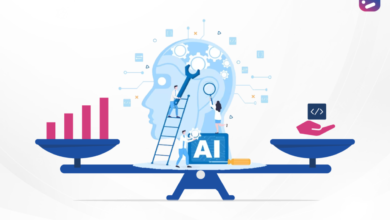The Ethical Dilemmas of Artificial Intelligence Development

As Artificial Intelligence (AI) continues to evolve, its integration into various aspects of daily life raises profound ethical dilemmas. AI has the potential to transform industries, enhance human capabilities, and solve complex global challenges. However, its development and deployment also bring pressing concerns related to privacy, bias, accountability, and societal impact. This article explores the key ethical dilemmas of AI development and the measures necessary to address them responsibly.
Understanding the Scope of AI Ethics
AI ethics refers to the principles and guidelines that govern the development and use of AI systems in a manner that aligns with human values and societal norms. These principles aim to ensure that AI technologies are used responsibly, equitably, and transparently while minimizing potential harm.
See also: The Ethical Challenges of Artificial Intelligence and Machine Learning
1. Bias and Fairness in AI
AI systems often reflect the biases inherent in the data they are trained on. These biases can result in unfair outcomes, particularly for marginalized groups. For example, biased algorithms have led to discriminatory practices in hiring, credit approval, and law enforcement.
To address this issue, developers must:
- Use diverse and representative datasets during training.
- Regularly audit AI systems for bias.
- Implement fairness metrics to assess outcomes across different demographics.
2. Privacy and Data Security
AI relies heavily on data, often personal and sensitive, to function effectively. The collection, storage, and use of such data raise significant privacy concerns. Unauthorized access or misuse of data can lead to breaches and exploitation.
Key measures to mitigate these risks include:
- Adopting privacy-preserving techniques like differential privacy and federated learning.
- Ensuring transparent data collection practices with user consent.
- Complying with data protection regulations, such as GDPR and CCPA.
3. Accountability and Transparency
AI systems often operate as “black boxes,” making decisions without clear explanations. This lack of transparency complicates accountability, particularly in high-stakes applications like healthcare and criminal justice.
To enhance accountability, organizations should:
- Develop interpretable AI models that provide explanations for their decisions.
- Establish clear guidelines for assigning responsibility when AI systems fail.
- Promote collaboration between developers, regulators, and stakeholders to create enforceable standards.
4. Job Displacement and Economic Inequality
AI-driven automation has the potential to replace jobs across industries, leading to economic disruptions and widening income inequality. While AI creates new opportunities, the transition can disproportionately affect low-skilled workers.
Addressing this challenge requires:
- Policies to reskill and upskill workers for AI-related roles.
- Implementation of universal basic income or similar social safety nets.
- Encouraging ethical use of AI to complement human labor rather than replace it.
5. Autonomous Decision-Making and Moral Responsibility
AI systems are increasingly used in autonomous decision-making, such as self-driving cars and military drones. Delegating life-and-death decisions to machines raises profound ethical concerns.
To manage these dilemmas, developers and policymakers must:
- Define clear boundaries for AI autonomy, particularly in sensitive domains.
- Establish frameworks for human oversight in critical applications.
- Incorporate ethical principles into AI design, such as prioritizing human safety and well-being.
6. Misinformation and Manipulation
AI-powered tools like deepfakes and generative models have made it easier to create and spread misinformation. This poses threats to democratic processes, social trust, and individual reputations.
Combating these risks involves:
- Developing AI tools to detect and counter misinformation.
- Implementing stricter regulations on the misuse of AI-generated content.
- Educating the public about the potential for AI-driven manipulation.
7. Global Inequality in AI Access
The benefits of AI development are not equally distributed, with developed nations reaping the most rewards while developing countries struggle to access and implement these technologies.
Promoting global equity requires:
- Encouraging international collaboration in AI research and development.
- Providing affordable access to AI technologies and infrastructure.
- Fostering inclusive AI policies that benefit underrepresented communities.
8. Environmental Impact of AI
AI development and deployment require significant computational resources, contributing to carbon emissions and energy consumption. The environmental costs of large-scale AI models have raised concerns about sustainability.
To reduce the environmental footprint of AI:
- Optimize AI algorithms for energy efficiency.
- Transition to renewable energy sources for powering data centers.
- Promote research into sustainable AI practices.
Balancing Progress and Responsibility
While AI offers immense potential, its development must be guided by ethical considerations to ensure that its benefits outweigh the risks. Stakeholders, including governments, tech companies, academia, and civil society, must collaborate to establish and enforce ethical frameworks.
Conclusion
The ethical dilemmas of AI development highlight the need for a balanced approach that prioritizes human values, fairness, and accountability. By addressing these challenges proactively, society can harness the transformative power of AI while minimizing its potential harm. Responsible AI development is not just a technological imperative but a moral one, ensuring that this powerful tool serves humanity’s best interests.





